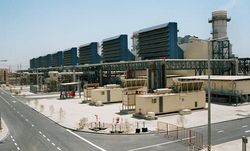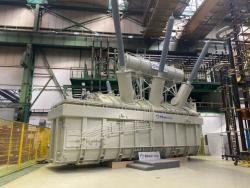
OR WAIT null SECS
© 2024 MJH Life Sciences™ and Turbomachinery Magazine. All rights reserved.
Turbomachinery piping: Stress analysis, flexibility and dynamic loads
Piping of turbomachinery packages should be routed with great care and after considering available space, the process, mechanical and flow constraints (such as pressure drop) and other requirements. More attention should be given to mechanical considerations, particularly piping stress analysis and optimum support designs.
Piping systems of any turbomachinery package should have sufficient flexibility to prevent thermal expansion (or contraction) or movement of piping supports and terminals. These can cause:
· Failure of piping or supports from overstress or fatigue.
· Leakage at joints.
· Detrimental stresses or distortion in piping and valves or in connected equipment (pumps and turbines, for example), resulting from excessive thrusts and moments in the piping.
Many machinery piping systems are under cyclic loading conditions whether from dynamic loadings, pulsation or cyclic thermal loads. Special designs and considerations are required for such piping systems; for instance, low yield strength bolting should not be used for flanged joints under cyclic conditions.
The number of connections in machinery package piping should be minimized and connection types such as flanges and compression type tubing should be selected with great care. In selecting and applying connections, possible adverse effects on the joints, such as assembly and disassembly, cyclic loading, vibration, shock, and thermal expansion and contraction, should always be considered.
The flexibility of package piping should be assured to keep stresses within limits, at the same time proper stiffness should be provided to avoid vibration under dynamic loads. These two might seem contradictory. However, the key is optimization. An appropriate analytical method or simulation should be used to assure adequate flexibility of package piping at the same time to provide proper stiffness of the proposed piping supports and the whole piping and package system.
Optimum and cost-effective piping can be achieved by designing piping right from the beginning to avoid reworks. Unfortunately, piping stress requirements are sometimes not sufficiently considered while routing and supporting piping systems; especially adequate flexibility is not provided to absorb expansion (or contraction) of piping systems due to thermal loads. Therefore, when piping systems are given to the stress engineer for detailed stress and flexibility analysis, they soon realize that the systems are “too stiff” and suggest routing changes to make the systems more flexible. The piping designers, in turn, make changes to routing and send the revised layout to the piping stress engineer to check for compliance again; such “back and forth” design iterations between layout and stress engineers continue until a suitable layout and support scheme is arrived at, resulting in significant increase in execution time, which, in turn, increases costs.
For some machinery piping systems, formal stress analysis might not be required or performed. Often no formal flexibility and stress analysis is needed for a piping system which is of uniform size (particularly short piping), has no more than two points of fixation, no intermediate restraints, small size piping systems and complex piping systems with different loops and bends.
The layout of piping often provides inherent flexibility through changes in direction, so that displacements produce chiefly bending and torsional strains within prescribed limits. The amount of axial tension or compression strain (which produces large reactions) is small.Where the piping lacks built-in changes of direction, or where it is prone to localized stresses, large reactions or detrimental overstrain may be encountered.
Sometimes it might be required to consider adding flexibility by one or more of the following means: bends, loops or offsets. If none of these is affective, expensive and maintenance-intensive solutions such as corrugated pipe and bellows can be considered. Suitable anchors, ties etc should be provided as required to resist end forces produced by fluid pressure, frictional resistance to movement, and other causes. When expansion joints or other similar devices are provided, the stiffness of the joint or device should be considered in any flexibility analysis of the machinery package piping.
Most piping and piping supports as well as structures of machinery packages are designed to stay within elastic behavior limits with ample margins. In this way, stresses are considered proportional to the total displacement strains in a piping system in which the strains should be usually well-distributed and not excessive at any point; in piping terms this is a balanced piping system.
Layout of machinery piping systems should aim for such a “balanced” piping condition. If in any portion, by mistake in design or any other reason, materials of piping and piping support pass the elastic level and overstrained behavior might be seen. In these situations, an excessive amount of strain may occur in localized portions of the piping system (known as an unbalanced system). The operation of an unbalanced system in the creep range may aggravate the deleterious effects due to creep strain accumulation in the most susceptible regions of the piping system. Unbalance may result from one or more of the following:
· Highly stressed small size pipe runs in series with large or relatively stiff pipe runs.
· A local reduction in size or wall thickness, or local use of material having reduced yield strength; for example, girth welds of substantially lower strength than the base metal.
· A piping line configuration in a system of uniform size in which the expansion or contraction should be absorbed in a short offset from the major portion of the run.
· Variation of piping material or temperature in a piping line



